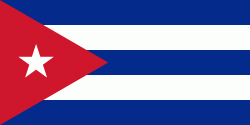Cuban peso
$
The Cuban peso (in Spanish peso cubano, ISO 4217 code: CUP) also known as moneda nacional, is the official currency of Cuba.The Cuban peso historically circulated at par with the Spanish-American silver dollar from the 16th to 19th centuries, and then at par with the U.S. dollar from 1881 to 1959. The Castro government then introduced the socialist planned economy and pegged the peso to the Soviet ruble.
The Soviet Union's collapse in 1991 resulted in a Special Period of difficult economic adjustments for Cuba. From 1994 to 2020 the Cuban peso co-circulated with the Cuban convertible peso (ISO 4217 code "CUC"; colloquially pronounced "kook" in contrast to the CUP, often pronounced "koop"), which was convertible to and fixed against the U.S. dollar, and which was generally available to the public at a rate of US$1 = CUC 1 = CUP 25. State enterprises under the socialist planned economy, though, were entitled to exchange CUPs into CUCs and U.S. dollars at the official, subsidized rate of US$1 = CUC 1 = CUP 1, within prescribed limits.
From 1 January 2021 Cuba implemented the so-called "Day Zero" of monetary unification which abolished the Cuban convertible peso as well as the 1 CUP/USD rate for state enterprises. Henceforth the Cuban Peso became the only legal tender in Cuba, CUCs were converted at the rate of 24 CUP/CUC, and a single official exchange rate of 24 CUP/USD became applicable for both public and private transactions. However, demand for hard currency made these exchange rates unavailable in the informal market.
Country
-
Cuba
Cuba, officially the Republic of Cuba (República de Cuba ), is an island country comprising the island of Cuba, as well as Isla de la Juventud and several minor archipelagos. Cuba is located where the northern Caribbean Sea, Gulf of Mexico, and Atlantic Ocean meet. Cuba is located east of the Yucatán Peninsula (Mexico), south of both the American state of Florida and the Bahamas, west of Hispaniola (Haiti/Dominican Republic), and north of both Jamaica and the Cayman Islands. Havana is the largest city and capital; other major cities include Santiago de Cuba and Camagüey. The official area of the Republic of Cuba is 109,884 km2 (without the territorial waters) but a total of 350,730 km2 including the exclusive economic zone. Cuba is the second-most populous country in the Caribbean after Haiti, with over 11 million inhabitants.
The territory that is now Cuba was inhabited by the Ciboney people from the 4th millennium BC with the Guanahatabey and Taíno peoples until Spanish colonization in the 15th century. From the 15th century, it was a colony of Spain, and slavery was abolished in 1886, remaining a Spanish colony until the Spanish–American War of 1898, when Cuba was occupied by the United States and gained independence in 1902. In 1940, Cuba implemented a new constitution, but mounting political unrest culminated in a coup in 1952 and the subsequent dictatorship of Fulgencio Batista, which was later overthrown in January 1959 by the 26th of July Movement during the Cuban Revolution, which afterwards established communist rule under the leadership of Fidel Castro. The country was a point of contention during the Cold War between the Soviet Union and the United States, and a nuclear war nearly broke out during the Cuban Missile Crisis of 1962. Following the collapse of the Soviet Union, Cuba faced a severe economic downturn in the 1990s, known as the Special Period. In 2008, Fidel Castro resigned after 49 years of leadership of Cuba and was replaced by his brother Raúl Castro.
